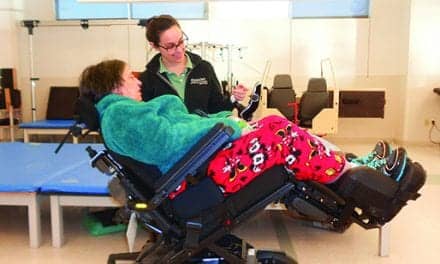A recent study suggests that monkeys and humans experience greater motor recovery than rats after experiencing a similar spinal cord injury (SCI).
A media release from the Ecole Polytechnique Fédérale de Lausanne (EPFL) notes that spontaneous improvement in humans occurs during the first 6 months after a spinal cord injury, allowing a patient to recover partial motor control.
However, according to the release, researchers at EPFL note in their study—published recently in Science Translational Medicine—that the neuronal mechanisms underlying this recovery in humans are nearly absent in laboratory rats.
“Research on rats is essential for developing regenerative therapies,” says study author Grégoire Courtine, PhD, the international paraplegic foundation chair in spinal cord repair in the Center for Neuroprosthetics at EPFL.
“But rodents show fundamental differences from primates in terms of neuronal reorganization and functional recovery.”
The reason for this lies in differences in anatomy and function of the corticospinal tract, which are the fibers through which the cortex communicates with the spinal cord. In rats, the corticospinal tract is mainly located in the dorsal column and is restricted to one side of the spinal cord, whereas in monkeys and humans this pathway migrated to the lateral column, expand in size, and became bilateral, the release explains.
“Because of these anatomical specificities, many fibers are spared after an injury,” Courtine states in the release. “The corticospinal tract forms detour circuits around the lesion, restoring communication between the brain and the neuronal circuits that control the movement of the arms and legs. This neuroplasticity is minimal in rats.”
The more complex the movement required—such as grasping an object or walking along a horizontal ladder—the greater the differences between the two species. While rats recover the ability to walk on flat ground, they are no longer capable of picking up food or positioning their paws accurately. Monkeys and humans, on the other hand, recover fine motor control and the ability to grasp objects, the release continues.
The difference is even more pronounced if the lesions are lateralized rather than symmetric, because the fibers are found on both sides of the spinal column in primates, per the release
The release notes that the identification of this primate-specific mechanism of recovery could have major implications for future research. Using primate models rather than rat models will improve the design of therapies to repair the human spinal cord and increase the accuracy of predictive models of recovery.
[Source(s): Ecole Polytechnique Fédérale de Lausanne, Science Daily]




